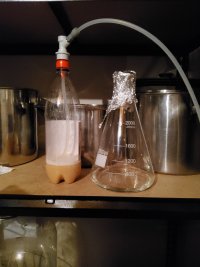Zambezi Special
Well-Known Member
As far as I remember from taking German at school (compulsary) it's a "Ringel S" and can be replaced by "ss".my knowledge that the Eszet letter (ß) is pronounced like S.
Necessary as there were no pc's and word processing programms. Just type writers
Other tit-but, but off topic
France and also Germany uses different keyboards.
Azerty for France (and part of Belgium).
Qwertz for Germany if I'm not mistaken









































![Craft A Brew - Safale S-04 Dry Yeast - Fermentis - English Ale Dry Yeast - For English and American Ales and Hard Apple Ciders - Ingredients for Home Brewing - Beer Making Supplies - [1 Pack]](https://m.media-amazon.com/images/I/41fVGNh6JfL._SL500_.jpg)

















